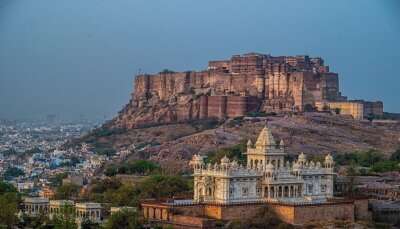Visit Sajjangarh Monsoon Palace Udaipur For A Weekend Gateway In 2025
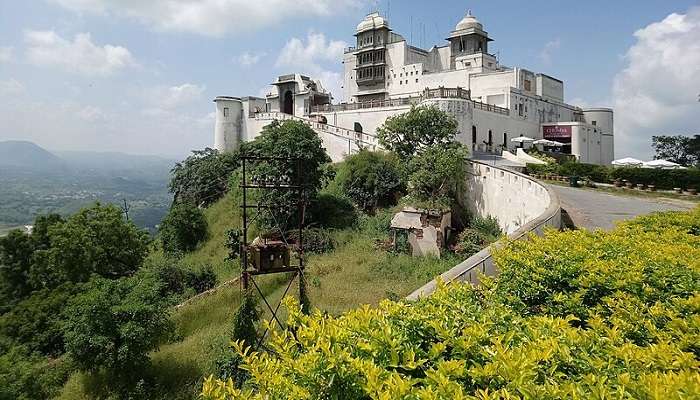
Sajjangarh Monsoon Palace Udaipur, located in Rajasthan, is one of the most famous places. This palace is situated on the hilltop opposite Fateh Sagar Lake. This palace got its name because it was built by Maharana Sajjan Singh in 1884. The palace is known to have stunning views of the lake and the surrounding town. It is built specially to watch the monsoon clouds, hence its name, Monsoon Palace. This palace was believed to have been built on the top so Maharana could see his ancestral home in Chittorgarh. The palace is made of white marble and is located on the Aravali hill in the Bansdara peak range.
History Of The Monsoon Palace
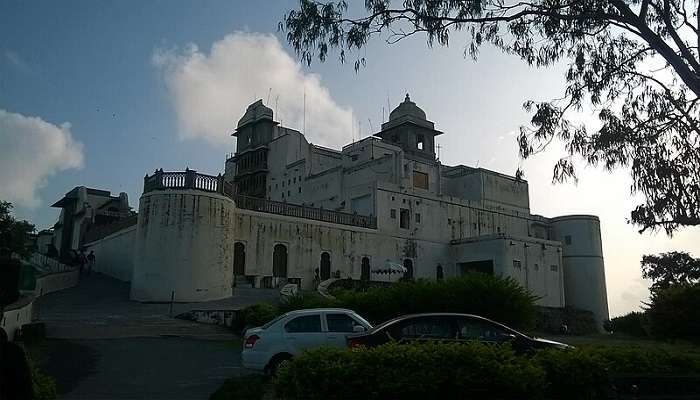
Sajjangarh Monsoon Palace, built by Maharana Sajjan Singh, talks about the history of the Mawer Kingdom. This king was the 72nd ruler of the Mawer dynasty. Sajjan Singh started ruling when he was 15 years old and faced many problems and challenges from his uncle, who didn’t want him to take the throne. A British agent then came in favour of Sajjan Singh and helped him take up the throne.
Sajjan Singh was a man of vision who was the reason for developing various infrastructures, activities, roads, water supply and many other developments. He also made many improvements to the lakes in Udaipur. He specially rebuilt the dam to give various advantages to the people. He was very determined to build the Monsoon Palace. Because of his outstanding achievements for Udaipur, it was recognized as the second municipality in India. Lord Ripon gave Sajjan Singh the title of grand commander of the Star of India in 1881. Hence, Sajjangarh Monsoon Palace talks about the outstanding achievements of Sajjan Singh and the history and culture of the Mewar dynasty.
Must Read: Places To Visit In Udaipur
The Architecture Of Sajjangarh Monsoon Palace Udaipur

The Monsoon Palace, located on the Aravali hill range, is entirely built with white marble and is nearly 944 metres above sea level. The main reason for building this palace was that Sajjan Singh wanted to track the monsoon clouds around the area, so he planned on building a nine-story palace that acts as an astronomical centre. But Sajjan Singh died early, at 26, when the palace construction paused. Before dying, he built the palace partially, but later, Maharana Fateh Singh completed the construction of this palace. This palace was also used as a hunting lodge by the royal family. The palace’s architecture is known for its high turrets, huge grand central court, many rooms and quarters, and a grand staircase. The marble on the pillars of this palace is carved into beautiful flowers and leaves. The walls of this palace are plastered with lime mortar.
The palace is gorgeous at night because of its Rajasthani architecture of domes, fountains and jharokha. This parallel also has a unique water harvesting structure that can store nearly 1,95,500 litres of rainwater. The water supply was inadequate, and hence, the palace was abandoned. The ground floor of this palace has been converted into a museum to display various pictures, paintings and maps.
Popular Culture And Tourist Attraction
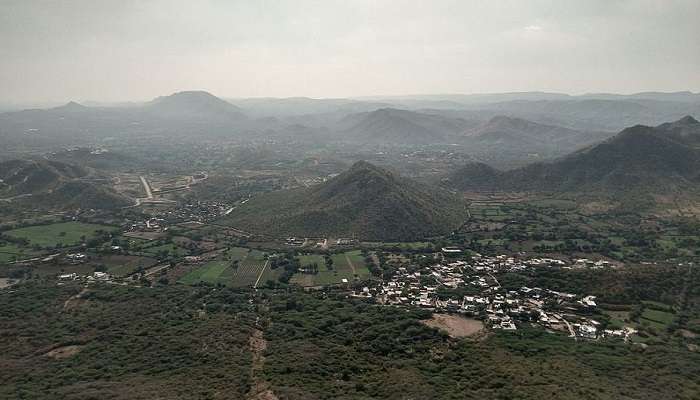
The Monsoon Palace was a filming location in 1983 for a James Bond film known as Octopussy. It was shown that the villain, who was an exiled African prince, resided in this palace. There were many scenes shot about the tiger hunt, the elephant hunt and a battle in the courtyard escaping from the palace to the jungle by James Bond, played by Roger Moore. There were also some other scenes shot at the Lake Palace Hotel. In many scenes in the film, James Bond is observed eating, running, sliding down the staircase, and fighting with the villain in this palace.
Sajjangarh Wildlife Sanctuary, established in 1987, is 5.19 square kilometres. This place was originally a shooting area for the royals when they were ruling, with thick woods on the hillside. One can get a view of this sanctuary from the palace. This sanctuary is home to many reptiles, including tigers, deer, jackals, and panthers. It is also a popular destination for bird watching and trekking. The trek starts from Gorilla Point and goes to reach the beautiful Aravali Hills, where one can observe the wildlife in the forest.
Suggested Read: Things To Do In Udaipur
Location And Timings
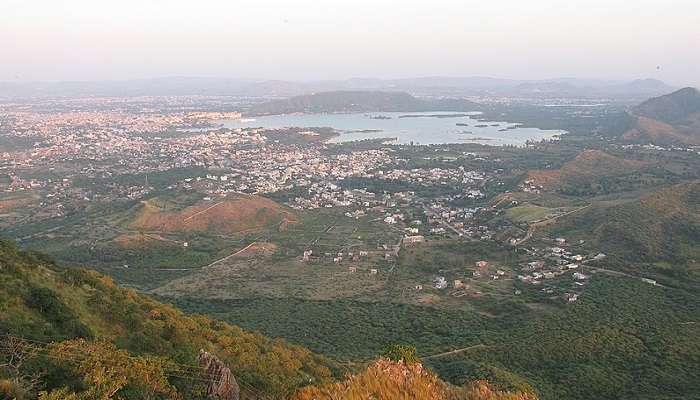
The Monsoon Palace is 5 km west of Udaipur, overlooking Lake Pichola. Tourists can access the palace by any local auto or taxi on a road surrounding the Sajjangarh sanctuary. There is also a boat ride across Lake Pichola for visitors to enjoy a beautiful palace view. The palace on the refuge is open until sunset for tourists. The Monsoon Palace is very famous for its exceptionally beautiful sunsets and also during the nighttime.
During the sunset, it is a beautiful view from the fort that covers the entire area of Pichola Lake and the golden orange rays of the sun. At night, the whole palace is decorated with fairy lights, giving it a fairy tale feeling. Udaipur is a famous travel destination; hence, there is easy access to roadways and airways for transportation. The palace is open from 9:00 a.m. to 6:00 p.m. with an entry fee of Rs 110 for Indians, Rs 80 for foreigners and Rs 65 for cars.
Visit Sajjangarh Wildlife Sanctuary
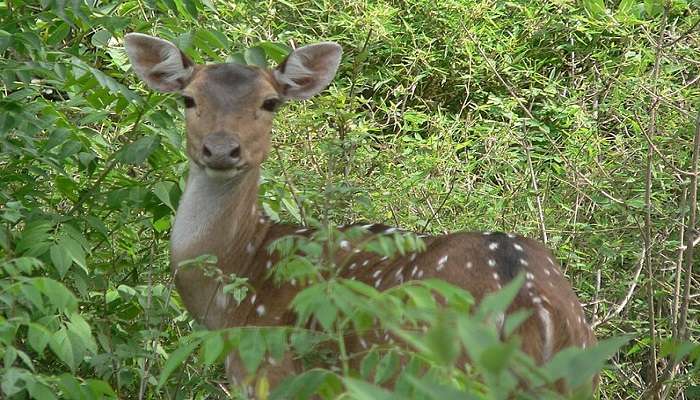
Sajjangarh Wildlife Sanctuary is located in the southern part of the Aravali Hills. This sanctuary is a famous attraction near the Monsoon Palace. This sanctuary was used earlier as a hunting and shooting ground by the maharanas of Udaipur. It was later made into a sanctuary in 1987. This sanctuary was also declared an eco-sensitive zone by the government of India in 2017. This sanctuary is the smallest in Rajasthan out of the 25 wildlife sanctuaries, which are 5.19 square kilometers. This sanctuary is home to various species. 129 bird species are aquatic and terrestrial, and there are also 91 species in the terrestrial category.
There are 8 winter migrants, two passage migrants and 81 species living in the sanctuary. Even though it is the most miniature sanctuary, it is home to many endangered species of various categories, like Sarcogyps Calvus, Gyps indicus, and Tis Parus nuchalis. The Sajjangarh Wildlife Sanctuary opens with an entry fee of RS 30 for adults and Rs 300 for foreigners. For tourists carrying cameras, the entry fee is Rs 80, and for video cameras, it is Rs 200. A children’s park and golf cart tour are also available near the sanctuary.
Further Read: Adventure Sports In Udaipur
Now that you have a list of things to keep in mind while travelling to Sajjangarh Monsoon Palace Udaipur check out the above-mentioned places and plan your trip to Udaipur to have an unforgettable experience. Whether you are a solo traveller or with your family, this palace will surely enhance your experience in Udaipur.
For our editorial codes of conduct and copyright disclaimer, please click here.
Cover Image Credit: Roshan kumar for Wikimedia Commons
Frequently Asked Questions About Sajjangarh Monsoon Palace Udaipur
What is the transportation accessibility to the Monsoon Palace?
By air, Dapok Airport is nearly 27 km away from this palace. By rail, there is Udaipur railway station. By road, there are many local transportation options available, like autos, taxis and buses.
Does the Monsoon Palace have lodging availability?
Yes, there is accommodation available in the Hotel Monsoon Palace, with various facilities and packages available according to the preferences of the tourists.
Why is the palace of Sajjangarh famous?
Sajjangarh Palace is famous for its beautiful architecture and long history and culture. This palace was built for observing the monsoon clouds, which is an interesting point.
Which are some well-known places to visit near this palace?
There are many places to visit near this palace, like the City Palace, Gabbar Hill, Mount Abu, Kumbhalgarh Wildlife Sanctuary and many more, for an amazing trip.
When is the best time to visit the Sajjangarh Palace recommended?
The months of October - March are the ideal times to visit Sajjangarh Palace because of the ideal weather for roaming around the lakes and mountains.
People Also Read:
Mattancherry Palace Neemrana Fort Palace Mehrangarh Fort Palace
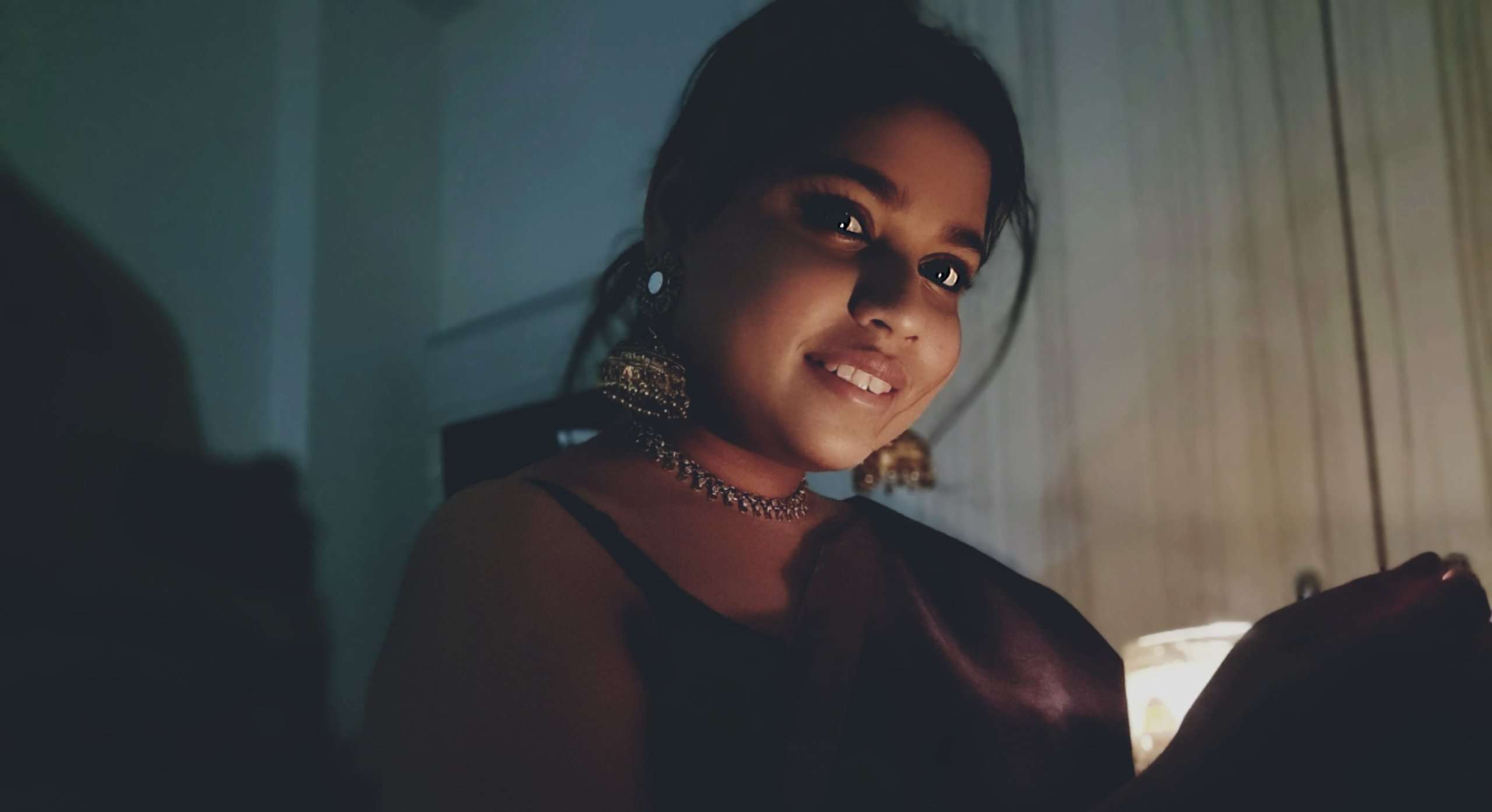
As a Travel Content Writer, I live to conquer the world of globetrotting with words. With my unquenchable thirst for storytelling, I believe that my words will inspire you to travel around the world’s breathtaking landscapes. As for me, I am an unapologetic selenophile, who loves to wander around in a starry night!





